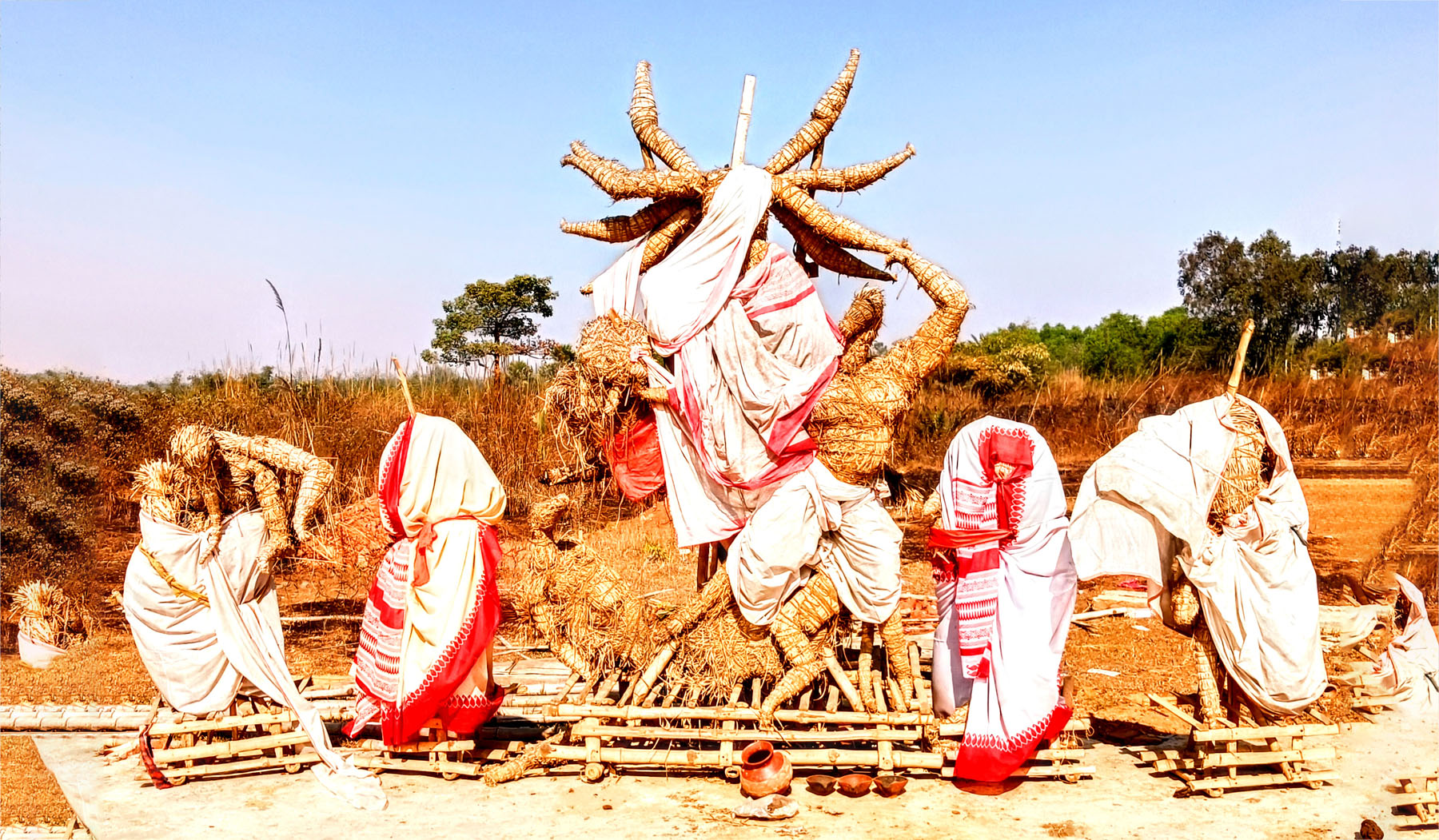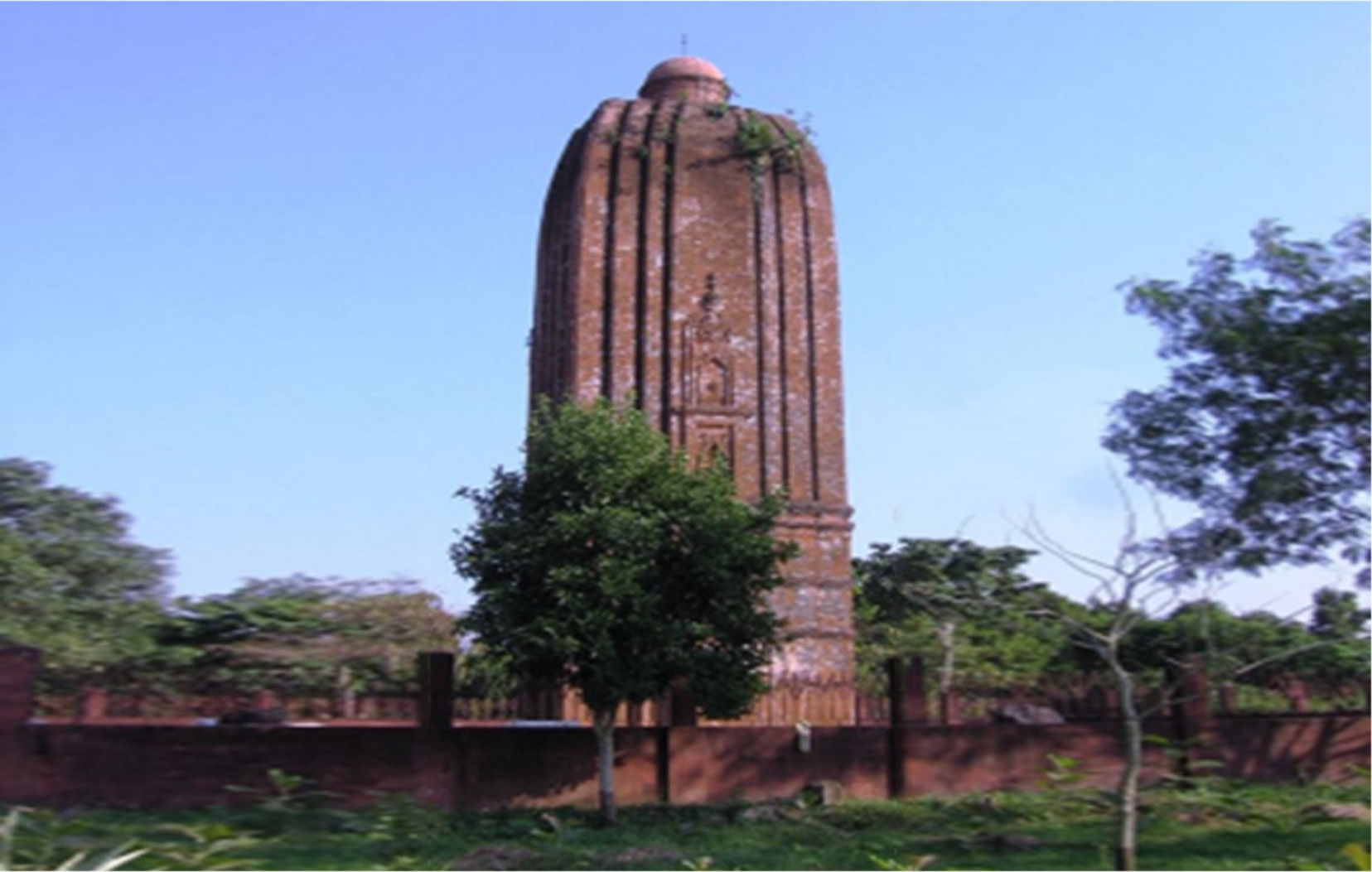
In Bengal school of temple architecture Deul style has its own place. Divided mainly between Bongiyo deul and Oriya deul this particular shape of temple or place of worship are few in this part of Bengal but each of them are unique and enrich. Deul temples are tower like structure with expansion on the either side. It is simple but majestic in presence. Jatar deul of South 24 Parganas and Bahulara deul of Onda village in Bankura are two most famous deul structure temple in Bengal. With this we have another lesser known deul temple in a small village near Burdawan and Birbhum border. This one known as Echai Ghosher deul holds an equal importance in the study of Bengal temple.
One needs to visit a village called Bonokathi. With its extraordinary natural setting the place is good enough to captivate a footloose mind. The mystic temple towering over a dense jungle, several centuries’ old brick-made tower with a history that is perhaps more of a legend than fact and a river bed with excellent panorama behind make this small unknown village of Burdwan an ideal escape point. The deul with a majestic silence underneath is the main attraction of the place. The tower is a perfect fusion of history and local folklore.

The Oldest available text supports that this place was once known as Dhekur gargh. According to some other sources this place was also known as Gopebhumi which was an independent state before merging with the Pala empire. In the year 1038 AD Naya Pala the son of Mahipala came in power. His rule continued till the end of 1058.However it was the darkest part of Pala dynasty as the administration gradually started to collapse in this period. In this endless tumult many local administrators announced their independence from Pala king and one from this land named Mahamandalik Echai Ghosh announced himself a sovereign king by refusing to pay tax to the ruler of Gour then, the capital of Bengal. The real the name of Echai was Ishwar Ghosh. By defeating another local king named Karna Sen he became the undisputed claimer of the region. Soon he captured many more new areas of Burdwan and finally cemented his position as a ruler of independent Gopabhumi.
Years later Lou Sen, son of the vanquished king Karna Sen took the revenge of his father’s defeat by killing Echai Ghosh on the bank of river Ajay. The place where he was killed is named “Kadune Danga“ as it was believed that after his death his worshipping deity Durga wiped for many days.
History is surprisingly silent after this. There is no record about the people who constructed this brick tower. Some think it was done by the next generation of Gope kings as a memorial of their brave spirit. Most common version is that it was constructed by none other than Rani Bishnukimari, the queen of Burdwan royal family. Some also think it was constructed by Raja Chitra Sen.

It may also be used as a watch tower and believed to be made by Echai Ghosh himself. However the brick found in it proves that this is a piece of 11th century when Echai Ghosh was dead for long.
The structure is said to be more than 900 years old and 50 ft high. The tower temple is slim yet solid and the influence of Orissa school is clear. The tower has five steps from ground to the top and the upper part is decorated with floral design and human figure. Each external wall is embellished with bricks made of terracotta which are not in plenty in numbers but eye-catching in excellence. The temple-like design starts with a kalas on the top and a man-like face, probably the Sun God or the Jaksha on the bottom. Below that there are arches and two pillars to support the same. Some floral designs and some Hindu edifices are found inside of the wall. At the bottom of that there is another set of arches and pillars with more designs on both of its sides. Under it a wonderful dancing figure with a musical instrument in hand is found. It is a lady playing dholak, the traditional music instrument. On the other three sides of the tower the same pattern designs are found with almost same size. The only change is in the human figure. On the right corner we find a male dancing figure in Nataraj style. However the figure is badly damaged and defaced.
The tower is now undertaken by Archeological Survey of India and is fenced but sign of inadequate care is apparent as one can find growing bush on the wall and cattle around the tomb. Presently a shiva linga is set up inside of the tower. In the year 1990 the The tower faced serious damage in the hands of some criminals who by mistake predicted this as storage of treasure.
The story of Banakathi does not end there. Besides the deul the dense jungle of Kaksa is another point of attraction. Only a few of us are aware that the oldest surviving Durga puja of Bengal is organized in a temple situated inside this dense jungle. Known as the temple of Shyamarupa of Gar jungle this temple is said to have been founded more than 1000 years ago and the stone curved Devi image worshiped till today is said to have been also as old as that.
This temple is said to have been founded by Echai Ghosh, and it got historical importance when Laxman Sena, after being vanquished, escaped from his capital Gour in the year 1205 and took refuge here. Legend has it that Jayadeb, the legendary author of Gitagovinda also visited this temple. However that seems to be impossible as Jayadeb was a Vaishnav and not expected to be attracted by a Shakta temple where animal sacrifice was a regular feature.

Old temple of Shyamarupa was destroyed long back. The present simple temple was constructed by the royal family of Burdawan. Later on they handed over the responsibility of the temple to the royal family of Hetampur. It was again given to a priest family of Bishnupur village. It is now a part of the forest and hence owned by the Govt.
During Durgostav people assemble here in huge number to celebrate the oldest Durga puja of Bengal. It is said a mysterious sound of canons is heard on the day of Sandhi puja and till now the mystery is not unfolded. Before 1985 the sound was much louder and clearer.
Today the temple stands like a mystic house inside of dense jungle. The image inside is made of black stone and perhaps one of the most exciting Durga image found in Bengal. The ambiance around is just breathtaking. The red soil road with green background and deep silence make things more magical. Birds of various types and some deer and peacocks in captivity of the forest department are additional attractions.